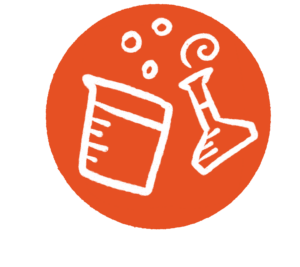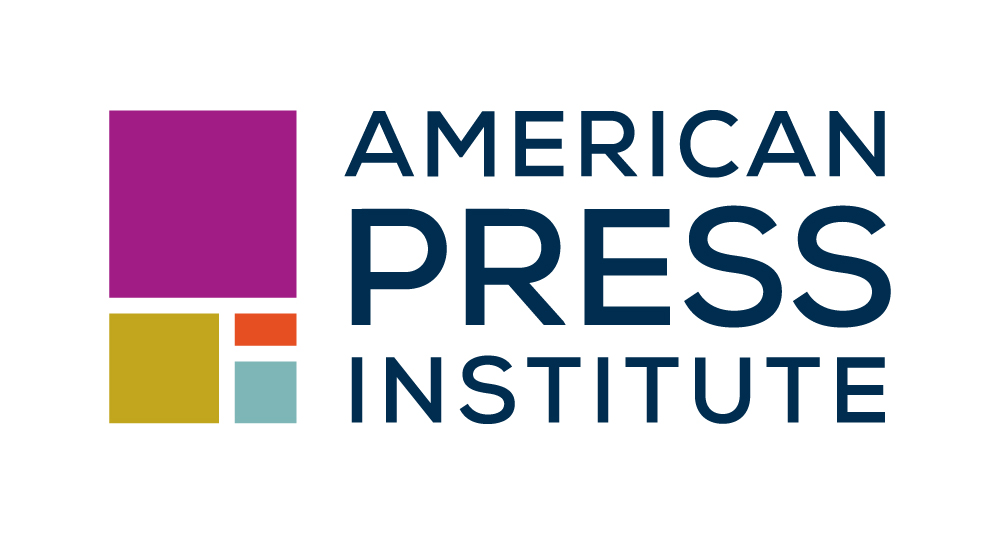Illustration by Sylvia Asuncion-Crabb
Trust in local news has been on the decline. In a 2022 survey by Pew Research, 71% of adults said they had some or a lot of trust in the information they get from local news organizations. That was down from 82% in 2016.
One way to rebuild trust — and reach new audiences — is through engaged journalism. There are varying definitions of engagement across journalism, but the definition that most closely fits what this section is about comes from Lindsay Green-Barber of Impact Architects: “Engaged journalism is an inclusive practice that prioritizes the information needs and wants of the community members it serves, creates collaborative space for the audience in all aspects of the journalistic process, and is dedicated to building and preserving trusting relationships between journalists and the public.”

Prioritize audiences
 What it means
What it means
Making the shift to prioritizing audiences will touch all parts of your journalistic process — from the issues you choose to cover to how you share the stories you tell.
To truly prioritize audiences, your organization may need to change some of its most fundamental processes. How do you decide what is newsworthy? How do you keep your own biases in check during reporting and editing? How do you create journalism with — and not just for — your community?
For legacy media, prioritizing audiences also likely means repairing past harm. How well do you understand your organization’s reputation in the community? How can you reconcile the harm you’ve caused your community? How do you think about how your journalism helps your community and its members? How well does your staff reflect your community?
 What it looks like in practice
What it looks like in practice
- The Democrat and Chronicle in Rochester, New York, a Gannett-McClatchy Table Stakes participant, focused first on changing its culture when it committed to creating journalism that reflected the richness of its communities. This involved dividing staff into working groups to tackle some identified problems, such as revamping public safety coverage and writing for communities rather than about them. From there, they formed partnerships with organizations in the communities they sought to serve and set up mobile newsrooms in different neighborhoods. Through these efforts, the Democrat and Chronicle increased the percentage of its content of interest to diverse audiences from 3%in the early fall of 2019 to as high as 17% in February 2020. The newspaper also cut its number of routine crime stories in half while increasing the number of stories about the communities’ response to public safety issues.
- The Montgomery Advertiser, a UNC Table Stakes participant, also strived to create journalism for communities rather than about them. Its focus was rural communities in the Black Belt of Alabama, which had lacked regular local news for years. The first step was establishing relationships and building trust in those communities. From there, they met the people who would be the focus of their stories, such as two women who raised money to install working sewage systems in an area that had been without them. The Advertiser found stories that approached community-wide issues from the perspective of individuals’ experiences performed much better than those about a general problem.
- The Atlanta Journal-Constitution, an alumnus of the UNC and Major Market Table Stakes programs, launched its free, weekly Unapologetically ATL newsletter to highlight Black culture and to better serve Atlanta’s Black community, which was not well represented among its readership. About nine months after its launch, Unapologetically ATL had about 5,000 subscribers with a 38.1% unique open rate. Additionally, during that period, about 30% of all new AJC.com users entered the audience funnel due to signing up for Unapologetically ATL.
 Try this
Try this
- Use the Fault Lines framework, developed by the Maynard Institute for Journalism Education, to gain self-awareness about your own biases and how they might influence coverage decisions and workplace relationships.
- Study the Anti-racist Table Stakes, developed by Cierra Hinton and Lizzy Hazeltine, and use their world-broadening matrix to help you consider how you can expand your goals by centering equity.
- Practice the techniques outlined in the API Engagement Zine, created by Amara Aguilar and Sarah Bennett, to test what tactics you want to incorporate into your work.

Collaborate with audiences
 What it means
What it means
Including community members in creating the journalism is a key part of engaged journalism, and it helps ensure what you’re creating is useful. That process can take many forms.
Your organization may want to survey the community or hold listening sessions to better understand the information people say they need in their daily lives. You might want to form a community advisory board, which can inform you about a specific topic or inform your overall coverage. Some organizations even consider these processes as having the community become the assigning editor.
 What it looks like in practice
What it looks like in practice
- The Kansas City Star, an alumnus of the Gannett-McClatchy Table Stakes Program, participated in the Mobilizing News Alumni Sprint and developed “Voices of Kansas City,” a community conversation project. It was a continuation of its work to repair the damage the newspaper had done to Black communities by perpetuating systemic racism. Based on what they heard in community listening sessions, the newspaper’s editor and Black Community Advisory Board decided to focus the first season on Black business owners. The Star then partnered with local nonprofit Kansas City GIFT to identify who to feature and with 90.1 FM KKFI, Kansas City’s community radio station, to share content. They received positive feedback from the business owners featured. A second season focused on activists. The lessons and sources from both seasons informed continuing coverage, including a twice-a-week series of mini-profiles on Kansas Citians from various backgrounds.
- In North Carolina, The Fayetteville Observer, a UNC Table Stakes alumnus, was also working to build trust and meaningful relationships with Black communities when it joined the Mobilizing News Alumni Sprint. The Observer’s listening sessions focused on Black professional women ages 30-45. At its first listening session, an emotional conversation about how Black women can support one another inspired participant Tiffany Campbell. She organized 100 Professional Black Women in Black, an event that featured photoshoots of these 100 women, including one at the historic Market House, where enslaved people had been sold. She later brought these women together in a Facebook group and organized a similar event for Black men.
- The Current GA, an alumnus of the UNC Table Stakes Program, turned to Reddit to work with its audiences to create election coverage that served their needs. The nonprofit investigative news organization wanted to serve first-time voters or voters new to the coastal Georgia region. They were able to use Reddit to listen to these potential audience members by asking questions on local subreddits. The high number of responses and engagement encouraged The Current to continue to use Reddit at every step of its reporting process.
 Try this
Try this
- Learn how to successfully host inclusive listening sessions to better understand your community, in this piece by API’s former director of community engagement, Letrell Crittenden.
- Create a community asset map to identify gaps in your team’s knowledge of communities you wish to collaborate with and serve, following these steps from Crittenden.
- Keep this community advisory committee advice in mind from Crittenden when considering how you might use this strategy in your organization.
- Study these lessons from PublicSource in Pittsburgh on how it made community-centered journalism a newsroom-wide effort, as shared by Crittenden.
- Plan your community listening strategy with this workbook from the American Press Institute.

Live events/convenings
 What it means
What it means
Live events are a valuable opportunity to bring together your journalists and your community. They allow you to engage with community members directly, build connections, increase trust and showcase your journalism. Events can also be a new revenue stream for your organization, through sponsorships and partnerships that help cover the event costs.
But live events are a lot of work. You must put together a team dedicated to designing and executing the event, determine the goals, thoughtfully pick a venue that matches your goals and optimizes the experience of attendees, plan a run of show, promote your event and perhaps recruit sponsors, and then actually pull the whole thing off. It’s a daunting task, but there is no substitute for connecting with your audiences in person.
 What it looks like in practice
What it looks like in practice
- API’s Live Events Sprint for Table Stakes Alumni brought together six organizations in 2024 to design and execute an event series. Vermont Public, a Poynter Table Stakes alumnus, saw the opportunity to deepen its “Citizens Agenda” work ahead of the election by holding community picnics around the state; Enlace Latino NC, a UNC Table Stakes alum, hosted public forums to help include the state’s Latino immigrant community in state policy and politics; and Boise State Public Radio, a Poynter Table Stakes alum, partnered for the first time with a local TV station to host panel discussions on mental health. Meanwhile, Blue Ridge Public Radio, a UNC Table Stakes alum, hosted trivia nights incorporating questions written by its journalists to reach a younger audience; Texas Metro News celebrated Black women leaders in the Dallas area; and statewide organization The Assembly hosted a breakfast in Greensboro, North Carolina, to introduce its new reporting team to the community.
- The Minnesota Star Tribune, a Major Market Table Stakes and alumni sprint participant, used its Minnesota Matters event series in 2024 to build relevance across the state. The Star Tribune picked six population hubs around the state to hold breakfasts or lunches that featured panels followed by small-group discussions about what makes the community unique. Feedback has been positive, and the Star Tribune plans to return to the communities in 2025 to deepen its relationships.
- Scalawag, a nonprofit media organization based in Durham, North Carolina, and an alumnus of the UNC Table Stakes program, has found that in-person and virtual events allow them to make their content more accessible to their audiences and open up a conversation with their audiences on how they can work together to advance equity and justice in the South. In their early days of events, when they had a membership model, they found 40% of members came from their events.
 Try this
Try this
- Plan your live journalism events with this workbook from the American Press Institute.
- Incorporate these ideas to structure your convening to build lasting connections, as shared by jesikah maria ross, an expert in participatory media projects.
- Get inspired by these convening ideas from API’s Local News Summit on Rural Journalism, Community and Sustainability.












